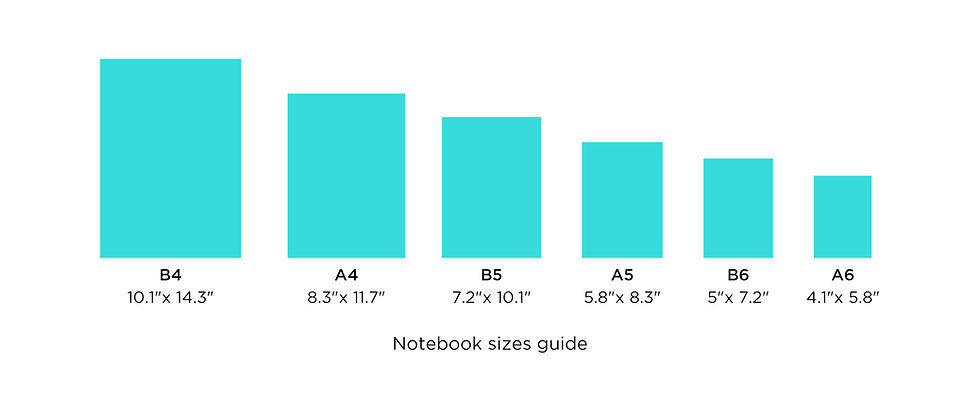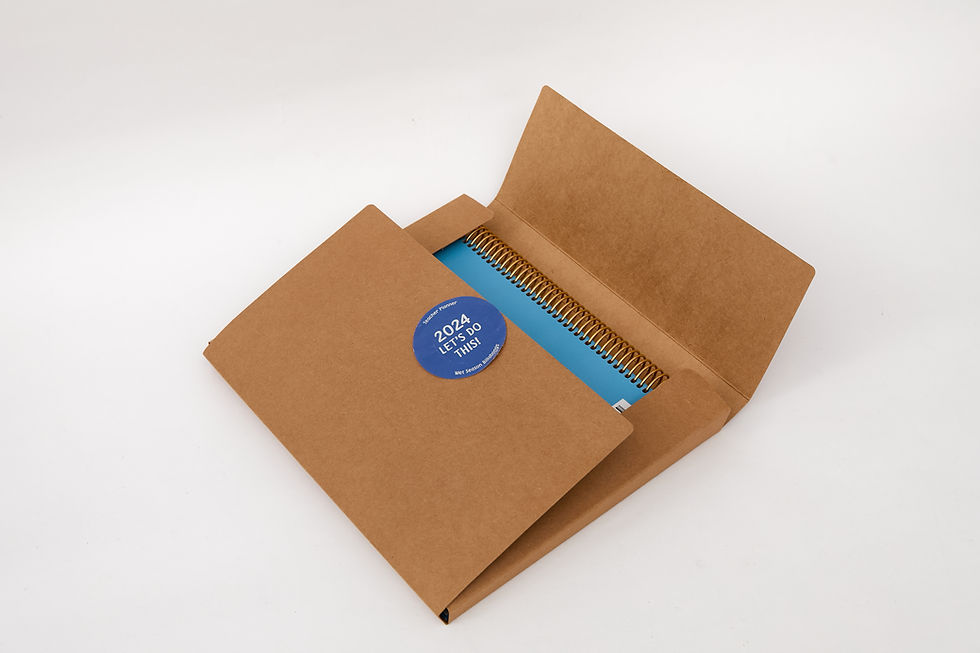A Simple Guide to Custom Hardcover Journal-For Buyers
- Leo Xia

- 3 days ago
- 11 min read
Thinking about creating a custom hardcover journal for your business or organization? You’re in good company. A hardcover journal pairs premium durability with endless design possibilities. In this guide I’ll break down what a hardcover journal is, why it stands above softcover alternatives and how you can design and produce a journal that speaks directly to your audience. I’ll also explore the key factors that affect printing costs and help you select reliable suppliers. Whether you’re a seasoned buyer or exploring notebooks for the first time, this article will give you all the insights you need.
Quick Content Reach:
What Is a Hardcover Journal and Why Choose It?
A hardcover journal is a bound notebook where the pages are encased in a rigid cover, usually made from greyboard, leather or cloth. This extra layer of protection makes the notebook more durable and gives it a premium feel. By contrast, softcover or paperback journals use flexible card stock, which costs less but offers less protection. Choosing between the two styles depends on how the notebook will be used and the impression you wish to convey.

Durability and Longevity
Hardcovers are built to last. A 2024 printing industry article notes that softcover binding is the economical choice, but hardcovers cost roughly 1.5–2 times more to produce because they are designed for heavier use. The rigid cover protects the interior pages from creases and tears and keeps the book looking neat even after years of use. Industry comparisons show that hardcover notebooks provide better protection and withstand frequent handling better than softcover notebooks. Softcovers may be lighter and cheaper, but they are more prone to bending and damage. If your journal will be handled daily, carried in bags or used as a long‑term reference, the longevity of a hardcover pays off.
Professional Impression
When you hand someone a custom hardcover journal, you communicate quality and care. Simply seeing a hardcover in a meeting exudes professionalism and reflects a commitment to excellence. Hardcover journals make a lasting impression at conferences, board meetings or client presentations. This premium feel also carries over into retail: buyers often associate hardcovers with higher value and are willing to pay more for them. Softcovers still have their place—especially for promotions or mass‑market giveaways—but they rarely deliver the same prestige.
Differences in Portability and Flexibility
There is a trade‑off between durability and portability. Hardcover journals tend to be heavier and bulkier. They offer a stable writing surface and keep your pages flat, which is ideal for desk use. Softcover notebooks are lighter and easier to carry, making them popular for travel or students who pack their bags full. Think about where your custom journal will be used—on a work desk, in a handbag or out in the field—and choose the construction that best suits that environment.
Aesthetics and Brand Image
Hardcover journals often look polished and professional, making them suitable for business settings. Leather‑bound or cloth‑covered options can be particularly luxurious. Softcover journals have a more casual look and can be playful or informal. Your design choices should align with the tone and personality of your brand. For example, if you run a high‑end lifestyle brand or corporate consultancy, a leather‑bound hardcover journal reinforces your image of quality. A lifestyle e‑commerce store targeting younger audiences might opt for a colorful softcover with custom illustrations.
Customization Potential
Softcover journals allow you to easily decorate or add stickers to the covers. However, modern printing techniques mean hardcover journals can be customized just as extensively. Foil stamping, embossing and lamination finishes (gloss, matte or soft‑touch) can all be applied to rigid covers to create unique textures and visual effects. For companies seeking to elevate their brand image, these finishes turn a simple notebook into a statement piece. This premium customization also justifies the higher price point of a hardcover.

Not sure whether hardcover or softcover fits your use case? Send your scenario for a quick spec check and sample plan: leoxia@lion-paper.com | WhatsApp +86 137 5075 6354 |
How a Custom Hardcover Journal Notebook Stands Out
Customization transforms an ordinary notebook into a memorable marketing tool or thoughtful gift.
Tailoring the Cover and Brand Identity
The cover is the first thing anyone sees. To make your custom hardcover journal stand out, start by incorporating your logo, brand colors and tagline. Foil stamping adds metallic accents that catch the light and convey luxury, while debossing presses your design into the cover for a subtle, tactile feel. Spot UV can highlight specific elements—like a logo or slogan—by adding a glossy layer over a matte background. Such techniques aren’t available on most consumer‑grade notebooks, so using them signals that your journal is bespoke.
When choosing cover materials, consider the end user. Hardcover binding can use cardboard, cloth, leather or special paper mounted on 2–3 mm grayboard. Cloth or leather exudes elegance and durability, while special papers like linen or textured finishes can give a tactile sensation that resonates with artisan brands. These materials aren’t only for aesthetics; they also affect how well the cover resists wear and tear.

Personalizing Size and Interior Pages
Size matters, particularly when your audience has specific needs. Standard notebook formats—A4, A5, B5, B6 and pocket size—offer different balances between portability and writing space. For executives who need room for meeting notes, an A5 or B5 journal may be ideal; for sales reps on the go, a pocket‑sized journal slips easily into a bag or coat pocket.
Inside, you have more options than you might think. Printing specialists allow customers to select blank, lined, grid, dot or fully custom interior patterns. A lined layout suits traditional note‑taking, while dot grids are perfect for bullet journaling and design sketches. You can even print prompts, calendars or corporate graphics on the pages to align with your brand messaging. Premium paper weights range from 80–140 gsm for interiors and 157 gsm–3 mm board for covers, creating a luxurious feel and preventing ink from bleeding through.

Superior Materials and Construction
The hallmark of the best custom hardcover journal is its construction. High‑quality uncoated paper gives a pleasant writing experience by providing grip and reducing glare. Cream or off‑white paper is often preferred because it’s easier on the eyes and exudes a premium feel. When journals include 120–140 gsm paper, they resist fountain‑pen ink bleed and allow both sides of a sheet to be used.
Bindery options also define the user experience. Hardcover binding encloses the text block within a rigid cover attached with glue or sewing. This method protects the pages and ensures the spine holds together after years of use. Spiral or wire‑O binding, by contrast, allows the notebook to lie flat and rotate 360 degrees. Wire‑O binding even lets you remove or add pages easily. Each binding type serves a different purpose: spiral and wire‑O work well for planners that need to lay flat on a desk, whereas hardcovers offer maximum durability and a polished look.

Finishing Touches
Finishing options can transform a journal into a keepsake. Glossy lamination makes colors pop, matte lamination conveys sophistication and soft‑touch lamination creates a velvety feel. Foil stamping, embossing and debossing add tactile depth. Even small details like gilded edges—where the edges of pages are colored or foiled—give your journal a distinctive appearance. By combining these finishing techniques, you can create an object that recipients want to show off and cherish.

Want to see your logo, colors, and finishes on a real concept? Request cover/material suggestions and digital mockups now: leoxia@lion-paper.com
Custom Hardcover Journal Printing: Cost & Supplier Considerations
No two journals cost the same to print. Understanding what influences pricing will help you budget effectively and avoid surprises. Several key factors determine the final cost of your custom hardcover journal.
Print Quantity and Economies of Scale
Print run size is one of the biggest cost drivers. Printing experts explain that ordering more copies reduces the per‑unit price because setup costs are spread across more units. For example, printing 1 000 copies might yield a unit cost of US $2.50 while printing 100 copies could push the price to US $5 per book. However, overprinting ties up capital and may leave you with unsold stock. A smart strategy is to start with a moderate print run, then reorder when demand is proven.

Paper Type and Book Dimensions
Paper quality and dimensions directly impact both feel and cost. Uncoated paper is the most budget‑friendly option, while coated papers like gloss or matte cost more but make colors stand out. If you want a luxurious look, heavier interior paper (120–140 gsm) and thicker cover stock (157 gsm paper mounted on 2–3 mm board) will increase the price. Custom sizes or landscape formats add to the cost because they require more setup and may produce waste material. Sticking to standard sizes like A5 or A4 keeps costs predictable.

Binding Type and Finishing
Different binding methods come with different price tags. Saddle‑stitching—folding pages and stapling them—is the most affordable, suitable for notebooks with fewer pages. Perfect binding (glued spine) is more expensive but offers a professional appearance and accommodates thicker books. Hardcover binding is the most expensive because it requires rigid boards, covering materials and additional labor. When selecting binding, balance durability against budget and intended use.

Color Printing and Artwork Complexity
Using color throughout your journal increases printing costs. Full‑color printing is ideal for illustrated pages or vibrant branding, but you can save money by limiting color to the cover or a few pages. Black‑and‑white interiors remain popular for functional notebooks and are more economical. Complex designs with multiple printing effects—like foil, spot UV and custom inserts—require separate passes through the press and increase setup time. Providing press‑ready artwork in the correct color mode (CMYK) and resolution helps reduce potential prepress charges.

Additional Costs: Logistics and Hidden Fees
Don’t forget shipping and project management costs. Some printers charge extra for packaging and distribution. If your journals are printed overseas, factor in freight and customs fees. Rush orders or last‑minute changes can incur hidden costs, so communicate your timeline clearly with your supplier.

Selecting a Reliable Supplier
Choosing the right supplier is just as important as budgeting. Look for partners who offer complete services—from sample production to bulk printing—and who can provide references or certifications (ISO 9001, FSC, BSCI) to prove their quality standards. A professional supplier should offer: request a quote, submit artwork, pay a deposit, approve proofs, proceed to production and finalize shipping. A good supplier will also advise you on paper selection, binding and finishing to achieve the desired outcome.

Get an itemized quote (quantity, paper, binding, finishes) plus a cost-down alternative—send your specs or target budget: leoxia@lion-paper.com | WhatsApp +86 137 5075 6354
Designing Your Custom Hardcover Journal Notebook
Creating a truly custom journal starts with thoughtful design. A well‑crafted notebook isn’t just a blank book; it reflects your brand’s story and serves the practical needs of its user.
Understand the Purpose and Audience
Before you sketch any layouts, identify who will use the journal. Market research is critical: the Blurb blog points out that identifying your target audience—executives, students, creatives—guides all design decisions. For executives, you might design a planner with daily schedules and meeting notes. For designers, consider dot‑grid pages for sketching. Narrowing your demographic into a niche helps you make purposeful choices about size, materials and aestheticsblurb.com.
Conduct Competitive Analysis
Study what’s already selling in your niche. Blurb’s experts recommend examining top‑selling journals, noting common themes and design elements. Look beyond notebooks—check stationery and greeting card trends for inspiration blurb.com. By understanding what consumers already like, you can decide whether to follow proven patterns or differentiate yourself with unique features. Be careful not to copy; instead, use competitor insights to refine your own ideas.
Plan the Layout and Structure
Decide how many sections your journal will have and what each will contain. Common components include a title page, table of contents, index, numbered pages and tabbed sections for different categories (e.g., goals, notes, inspiration). For functional notebooks like planners, you can include yearly calendars, monthly views, project trackers and note sections. Include features that support your audience’s workflow, such as dotted pages for bullet journaling or lined pages for traditional note‑taking. If you’re designing a gratitude journal, include prompts or quotations.

Choose Colors and Typography Wisely
Color palette and typography should mirror your brand identity and the mood you want to convey. Bold, adventurous fonts and imagery suit travel journals, while calming colors and simple graphics work better for mindfulness journals. Consistency is key: use your brand’s colors across the cover, interior headings and section dividers. Choose a legible font for the body text and a distinctive typeface for titles or inspirational quotes. Avoid overcrowding pages with too many fonts or colors; instead, let white space make the design airy and easy to read.
Add Personalized Elements
Personal touches transform a notebook into a cherished keepsake. You can incorporate illustrations, maps, charts or prompts on interior pages. Travel journals might include packing checklists and map templates, while business journals could feature goal‑setting frameworks or inspirational quotes relevant to your industry. Photographs, brand mascots or custom artwork make the journal uniquely yours. If your brand has a sustainability mission, include educational snippets about recycled paper or responsible forestry to reinforce your message.
Use Professional Tools and Templates
Free and paid tools simplify the design process. Blurb recommends their BookWright software for quick, template‑based designs, while professional designers might prefer Adobe InDesign for full creative control. Photoshop can also be used for custom artwork and page layouts. Working with templates ensures correct bleed, margins and safe zones, which is vital for accurate printing. Your printer may offer custom templates or file checking services to help you prepare print‑ready files.
Ask for ready-to-use interior templates (lined/dot/grid/planner), brand-safe color guidance, and a prepress checklist to avoid rework: leoxia@lion-paper.com
Summary Table
Final Words
Designing and producing a custom hardcover journal is more than just binding paper; it’s about creating a branded experience that aligns with your values and delights your customers. By understanding why hardcovers stand apart—superior durability, professional appearance and long‑term value—you can decide whether they suit your project. Leverage customization options like foil stamping, embossing, premium paper and unique page layouts to make your journal truly special.
Budget wisely by considering print quantity, paper type, binding style, color usage and finishing options. A trusted supplier will guide you through each step—requesting quotes, checking artwork, producing samples, printing, binding and shipping—so you can focus on crafting a design that resonates. Most importantly, keep your end user in mind at every stage. A well‑designed notebook isn’t just a product; it’s an invitation to record ideas, plan journeys and make memories.
We’ve helped countless brands transform their ideas into tangible products that inspire and engage.
If you’d like to explore how a custom hardcover journal can elevate your brand, please contact us. Our team will listen to your requirements, advise on materials and finishes and ensure your journal exceeds expectations.
Ready to move? Share your brief to start a custom sample in 5–7 days (ISO9001/FSC/BSCI facilities) and a production timeline: leoxia@lion-paper.com | www.lionpaper-istyle.com
—Leo Xia, CEO, Lion Paper Products
You design, we deliver.
FAQs:
Q1: Why choose a hardcover over a softcover notebook?
A: Hardcovers provide superior durability and a polished, professional look. They protect the pages better than softcovers and make a stronger brand statement.
Q2: How does print quantity affect cost?
A: Larger print runs lower the unit cost because setup fees are spread across more copies.
Q3: Which paper is best for writing?
A: Uncoated cream or off‑white paper provides a smooth, non‑glare writing surface and is recommended for notebooks.
Q4: How long does it take to produce a custom journal?
A: Production time depends on complexity and quantity. After proof approval and deposit, mass production begins; final delivery follows upon full payment.
Q5: What should I prepare before contacting a supplier?
A: Prepare your target quantity, size, binding preference, page layout, artwork in CMYK at 300 dpi and a clear timeline. Providing these details helps suppliers give accurate quotes and timelines.
Are you looking for a reliable manufacturer? Reach out to Lion Paper for a free quote and consultation. Let’s collaborate on creating custom writing paper products that will set your brand apart from the competition!
About Lion Paper
Company Name: Lion Paper Products
Office Address: 20th floor, Chuangyedasha Building, No. 135, Jinsui Road, Jiaxing City, Zhejiang Province, China
Factory Address: No.135, Xuri Road, Jiaxing City, Zhejiang, China
Email: Leoxia@lion-paper.com
Audit Certifications: ISO9001:2015/FSC/SEDEX SMETA/Disney FAMA/GSV/SQP







Comments